 In my previous post I discussed Thomas E. Patterson’s just-published book, Informing the News: The Need for Knowledge-Based Journalism (Vintage Books, 2013), which puts forward the radical idea that journalism as a practice would improve dramatically if journalists actually knew something about the subjects they covered.
In my previous post I discussed Thomas E. Patterson’s just-published book, Informing the News: The Need for Knowledge-Based Journalism (Vintage Books, 2013), which puts forward the radical idea that journalism as a practice would improve dramatically if journalists actually knew something about the subjects they covered.
Patterson, Bradlee Professor of Government and the Press at the Harvard Kennedy School, founded Journalist’s Resource, a website at which professional journalists review studies in various disciplines in order to sort out the reliable from the junk. He based his book on the research and analysis resulting from a multi-year initiative of the Carnegie Corporation and the Knight Foundation.
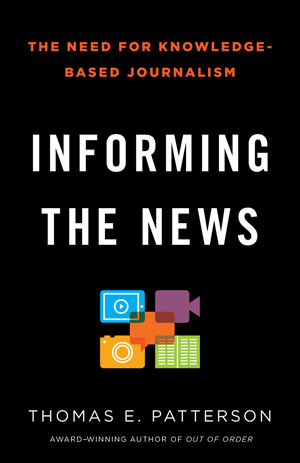
I’ve contrasted his position to that of Natalie Arriola, who contended with me several years back in an online photography forum and in comments at this blog, asserting that “all opinions hold equal weight” and asking, without a trace of ironic intent, “What makes the opinion of a certain highly informed person more valid than that of someone who is not informed?”
Most would take this question as rhetorical, though Arriola decidedly didn’t mean it as such. Humans have looked to the more knowledgeable among themselves for guidance since time immemorial, patently a survival-positive tendency. Other species do so as well, for the same reasons: those who possess more knowledge and experience have the highest likelihood of avoiding errors and achieving success in any endeavor.
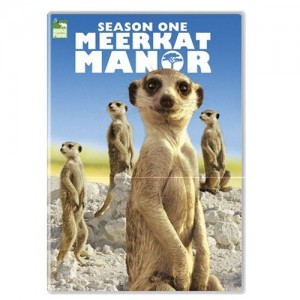
Meerkat Manor, Season One on DVD
All opinions do not hold equal weight among meerkats or gorillas, nor in any human society with which I’m familiar. That this has escaped Arriola and those who agree with her tells us more about the sad state of the educational system through which they transited than it does about the purported individual and collective wisdom of the ignorami.
The Buzz Around “Hive Mind”
Patterson directs his call for what he terms “knowledge-based journalism” at those involved in reporting, editing, and publishing what we usually think of as “hard” news, and at those who teach and train these figures. (Its opposite, ignorance-based journalism, would seem indefensible.) But his critique applies no less to the territory now referred to as “cultural journalism,” and to the subset thereof known as criticism.
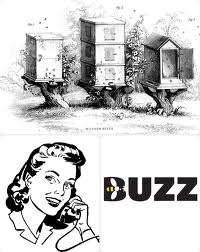 I take Arriola’s challenge, however jejune, as symptomatic of the fact that confidence in “hive mind” has begun to extend to commentary that passes for critical response, at least among those who rarely if ever read working critics of any medium. Yet hive mind has even less to offer when it comes to criticism of the arts. Tweets from twits, casual taste-mongering commentary (“I really love this!”) from strangers with no credentials, may satisfy the hunger for attention and approval of wannabe / newbie / “emerging” artists, but they carry no weight in the professional world; put bluntly, only a fool would list “500 Facebook ‘likes'” on a resumé.
I take Arriola’s challenge, however jejune, as symptomatic of the fact that confidence in “hive mind” has begun to extend to commentary that passes for critical response, at least among those who rarely if ever read working critics of any medium. Yet hive mind has even less to offer when it comes to criticism of the arts. Tweets from twits, casual taste-mongering commentary (“I really love this!”) from strangers with no credentials, may satisfy the hunger for attention and approval of wannabe / newbie / “emerging” artists, but they carry no weight in the professional world; put bluntly, only a fool would list “500 Facebook ‘likes'” on a resumé.
I challenge anyone to point me and this blog’s readers to a single notable instance of anonymous or open-source criticism, historianship, or theory, something that makes a distinctive contribution to the literature of photography. Most of what I find in that vein constitutes nothing more than a hodgepodge of received facts and ideas, liberally sprinkled with factoids and misinformation. (See, for example, randomly chosen, the Wikipedia entry on Edward Weston.)
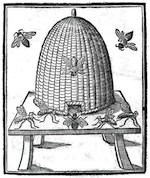 Here and elsewhere over the years I’ve lamented the steady deprofessionalization of art and photo criticism and the rise of hive-mind babbling, which is anything but knowledge-based. If you read “The Loneliness of the Long-Distance Reader” by Colin Robinson, on the deprofessionalization of book reviewing (from the New York Times Sunday Review, January 4, 2014), in tandem with my own 2011 lecture, “Dinosaur Bones: The End (and Ends) of Photo Criticism,” you’ll find that they run almost exactly parallel.
Here and elsewhere over the years I’ve lamented the steady deprofessionalization of art and photo criticism and the rise of hive-mind babbling, which is anything but knowledge-based. If you read “The Loneliness of the Long-Distance Reader” by Colin Robinson, on the deprofessionalization of book reviewing (from the New York Times Sunday Review, January 4, 2014), in tandem with my own 2011 lecture, “Dinosaur Bones: The End (and Ends) of Photo Criticism,” you’ll find that they run almost exactly parallel.
Cold comfort to know that it’s pandemic; misery doesn’t always love company.
Knowledge-Based Criticism
What would knowledge-based criticism look like? Very much like knowledge-based journalism. According to Patterson, a report prepared for the Carnegie-Knight Initiative by Wolfgang Donsbach and Thomas Fielder identified “five competencies that journalists need to acquire: (1) awareness of relevant history, current affairs, and analytical thinking; (2) expertise in the specific subjects to be reported upon; (2) knowledge of the processes of journalism; (4) awareness of ethical standards; and (5) mastery of practical skills.” No less reasonable to expect these of a critic than of a journalist, if you substitute the words critics and criticism for journalist and journalism in the recipe above.
Patterson defines knowledge as “systematic information.” From personal experience, I can attest that it’s exceedingly difficult (though not impossible) to develop such a system on your own. Whatever its many shortcomings, the post-secondary environment at its best offers a rationalized encounter with the field of ideas in any given discipline. Engaging with an area of study in this way not only saves time and effort but incorporates challenges and corrective responses to misunderstandings that self-taught students may not even know they need.
So, if an aspiring photo critic today asked me how to start out, I’d advise considering formal study of one or more pertinent disciplines. But I’d endorse a much wider menu of optional disciplines for a critic than Patterson proposes for a journalist. For the latter, a logical one-to-one correlation pertains. If you plan to cover financial affairs, then study economics (and perhaps statistics). If you want to cover science news, ground yourself in biology, physics, chemistry. If it’s politics that pulls you, then political science and history (with, possibly, minors in sociology and statistics). Etcetera, etcetera.
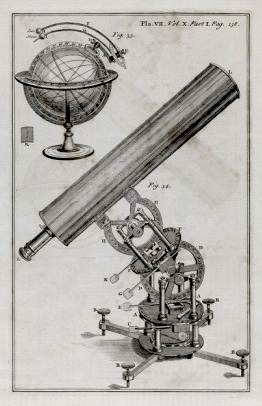
18th-century astronomical equipment, engraving
For the arts, the relationship between fields of formal study and choice of medium the critic will address do not necessarily coincide so directly. The arts and their audiences benefit from bringing to bear on them insights from a wide variety of disciplines: not just, in our case, art history and photo history, but the history of technology, optics and the history of science, sociology, anthropology, perceptual psychology, psychoanalysis, linguistics, and more. The applicability of any of those to photography, their usefulness as sources of insight and vocabulary, requires proving; but I would encourage experiments in such cross-fertilization.
That doesn’t constitute an endorsement of jack-of-all-trades generalists, the typical graduates of programs in “cultural journalism,” who can write well enough and meet their deadlines but bring to their assignments only a casual spectator’s acquaintance with any of the arts. Such writers generate commentary that at best serves a placeholding function and, at worst, takes up print or broadcast or online space that an informed critic could put to much better use.
Learning How to Learn
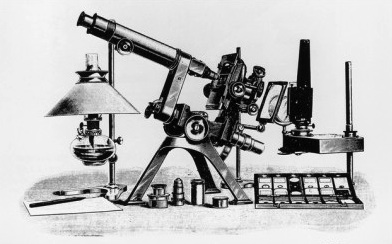
Powell & Lealand No. 1 microscope, engraving
I’ve often told my own students that they will profit most from their education if they can learn how to learn ― which means (because temperament and personality affect one’s response to different teaching/learning styles) learning how you yourself learn. Understand and master that process and you will find yourself able to learn whatever you need to know.
In that sense, it matters less to me what a given critic knows, in terms of his or her specific background and education, than that he or she consistently demonstrates not just writing skill and articulate opinion but what Patterson calls “knowledge competency” that involves “systematic information.” The advice Walker Evans gave applies to all of us, not just photographers: “Stare, pry, listen, eavesdrop. Die knowing something. You are not here long.”
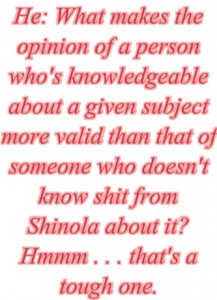
In order to die knowing something you have to live knowing something. And you need to keep in mind that knowledge isn’t an end in itself, just an intermediate step. Clifford Stoll and Gary Schubert pointed out that “Data is not information, information is not knowledge, knowledge is not understanding, understanding is not wisdom.” Becoming well-informed separates you from the ignorant, but doesn’t certify your level of comprehension, much less make you wise.
Moreover, as Richard Kirstel said, “Ignorance is a condition; dumbness is a commitment.” Surrounded as I find myself by the passionately committed as well as the ignorant, I can offer Natalie Arriola a simple answer to her question. What makes the opinion of a highly informed person more valid than that of someone who is not informed is precisely that he or she is well-informed ― one step further along the path to understanding, and thus to wisdom, than the uninformed.
•
This post supported by a donation from the Estate of Lyle Bongé.


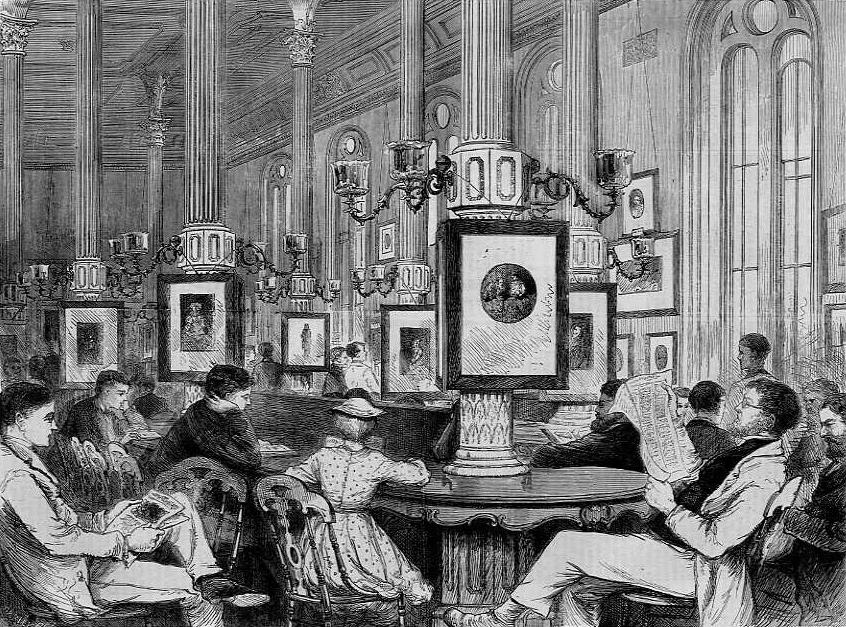




back in my jazz musician days we used to say that the music had ‘soul’.
soul was something that you got from life. especially black lives.
critics today seem to be completely cerebral and emasculated. academics.
they have no soul nor do they value it. this is reflected in work that is selected which is mostly mental masterbation. no feeling, no sensuality, no soul.
sad.